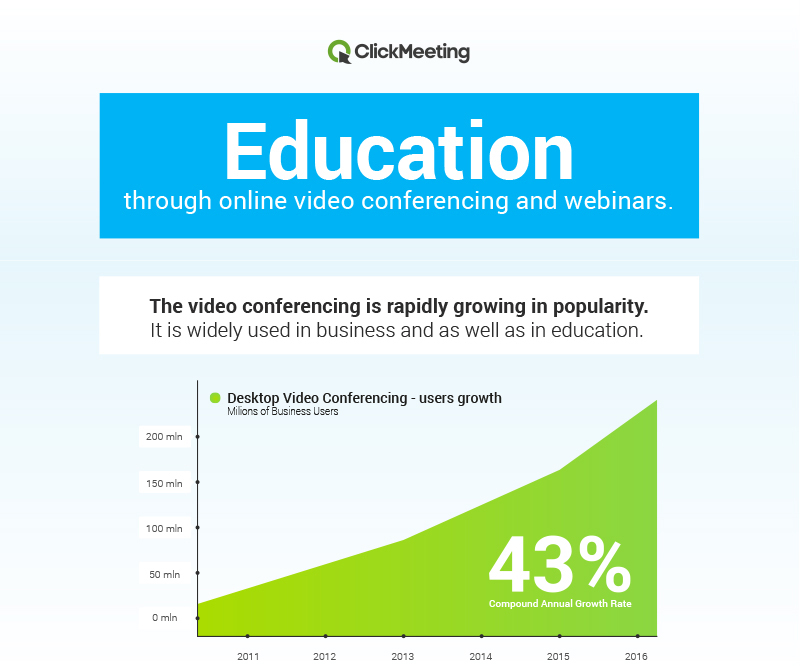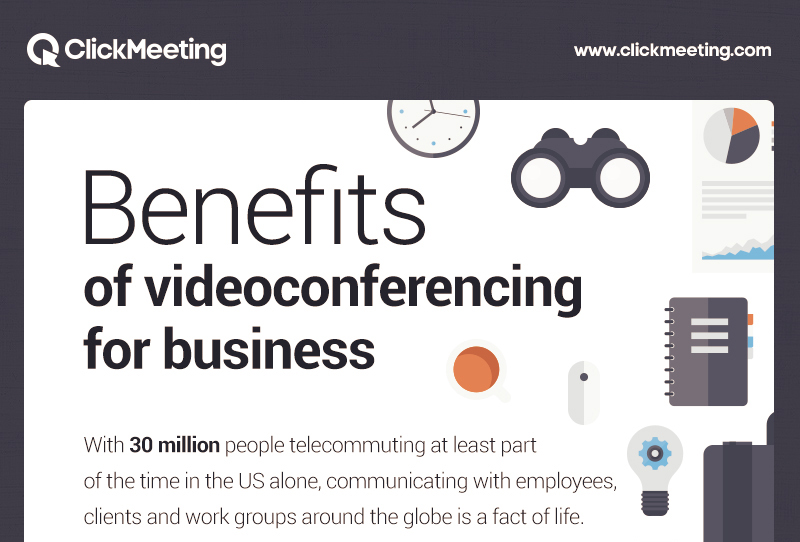In digital business, lead generation and lead nurturing are two of the main keys to success. After all, if you can’t generate leads and nurture them effectively, you won’t have anyone to sell your products to.
But what do these terms actually mean for your business? And more importantly, how can you use webinars to turn curious prospects into paying customers? That’s exactly what we’re covering today.
We’ll break down the difference between lead generation and lead nurturing, then show you practical ways to use webinars for both. By the end, you’ll have a clear roadmap for building a webinar strategy that actually fills your sales pipeline.
Let’s dive in.
Table of Contents
Key Insights
- Lead generation identifies potential customers – it’s about collecting contacts who might buy from you later. Lead nurturing builds relationships with those contacts until they’re ready to purchase.
- 73% of marketing and sales leaders say webinars are one of the best lead generation methods – they’re engaging, scalable, and produce high-quality prospects when done correctly.
- 20-40% of webinar attendees become qualified leads – this conversion rate makes webinars one of the most effective tools in your marketing arsenal.
- 92% of live webinar attendees participate in Q&A sessions – this gives you direct access to prospect questions, concerns, and buying signals.
- Segmentation is crucial for lead nurturing – not every lead is at the same stage. Tailor your webinar content to where prospects are in their buyer journey (awareness, consideration, conversion, or loyalty).
- Repurposing live webinars into on-demand content extends their value – one webinar can generate leads for months after the live event ends.
The Difference Between Lead Generation and Lead Nurturing
Before we get into tactics, let’s make sure we’re speaking the same language.
Lead generation is the process of identifying and collecting contacts who might become future customers. Think of it as casting a wide net – you’re looking for people who have a problem your product can solve, even if they don’t know about your solution yet.
Lead nurturing is what happens next. It’s the long-term process of building relationships with those contacts until they’re ready to buy. You’re not pushing for a sale on day one. Instead, you’re providing value, answering questions, and staying top-of-mind until the moment is right.
Here’s a simple way to think about it: lead generation is like meeting someone at a networking event and exchanging business cards. Lead nurturing is the follow-up coffee meetings, helpful emails, and relationship-building that turns that contact into a client.
Both processes work together. Generate leads without nurturing them, and they’ll forget about you. Nurture leads without generating new ones, and your pipeline dries up. You need both to keep your business growing.
Using Webinars to Generate Leads
Webinars are one of the most powerful lead generation tools available. In fact, 73% of marketing and sales leaders say they’re one of the best methods for capturing quality prospects.
Why do webinars work so well? They’re interactive, they position you as an expert, and they attract people who are actively looking for solutions. Unlike cold outreach, webinar attendees raise their hands and say “I’m interested in this topic” – that’s a warm lead from the start.
But hosting a webinar that actually generates leads takes more than just turning on your camera and talking for an hour. Here’s what you need to do to make it work.
Know Your Audience
You can’t generate leads if you don’t know who you’re trying to reach. Are you targeting CEOs of mid-sized companies? Small business owners just getting started? Marketing managers looking for new tools?
Start by asking yourself these questions: What keeps my ideal customer up at night? What goals are they trying to achieve? Where do they hang out online? What language do they use when talking about their problems?
Once you’ve answered these questions, create buyer personas – fictional representations of your ideal customers. Include demographic details (age, income, job title) and psychographic information (goals, fears, motivations). These personas will guide every decision you make about your webinar, from the topic you choose to how you promote it.
Brainstorm Content Ideas
Now that you know your audience, what are you going to teach them? The topic you choose can make or break your lead generation efforts.
Talk to your sales team. They work with prospects every day and know exactly what questions people ask before they buy. What objections do they hear most often? What topics generate the most interest?
Your webinar content needs to deliver real value – not just a thinly veiled sales pitch. Give away your best strategies, frameworks, and insights. Yes, even the “good stuff” you’d normally charge for. When you provide genuine value upfront, people remember you when it’s time to buy.
Promote Your Event
You’ve planned an amazing webinar. Now you need to get people to register. Research shows that 20% to 40% of webinar attendees become qualified leads – but only if they actually show up.
Here are the most effective promotion channels for webinar lead generation:
Social Media
Where does your audience spend time online? LinkedIn for B2B? Instagram for consumer brands? Focus your efforts where your prospects actually are.
Don’t just post once and forget about it. Create a promotion schedule: announce the webinar, share speaker highlights, post teasers about what you’ll cover, and create countdown posts as the date approaches. And remember – social media is a conversation, not a broadcast. Respond to comments, answer questions, and engage with people who show interest.
Email Marketing
Your email list is gold for webinar promotion. These people already know you and have given you permission to contact them. Send a series of emails: the initial invitation, a reminder a week before, another reminder the day before, and a final “starting soon” email an hour before the webinar begins.
Each email should emphasize different benefits. The first might focus on what they’ll learn. The second could share social proof from past attendees. The third might create urgency by mentioning limited spots or a deadline for registering.
Paid Advertising
Want to reach beyond your existing audience? Facebook Ads and Google Ads let you target people based on their interests, job titles, company size, and more. You can get your webinar in front of exactly the right people.
Start with a small budget and test different ad variations. Which headlines get more clicks? Which images perform better? Track your results carefully and invest more in what’s working.
Partnerships
Know other companies or influencers in your industry? Ask them to promote your webinar to their audience. They’ve already built trust with their followers, so their endorsement carries weight.
Better yet, invite them to co-host the webinar with you. You split the work, combine your audiences, and both generate more leads. It’s a win-win.
Click’s Tip:
ClickMeeting integrates with Facebook, LinkedIn, Twitter, and YouTube, making it easy to promote your webinars and expand your reach. Check it out for yourself today!
One more thing about promotion: don’t stop after people register. If you’re hosting a live webinar, keep sending reminders right up until the event starts. Just because someone registered doesn’t mean they’ll remember to attend. Your job is to keep them excited and make sure they actually show up.
Collect the Right Information
Here’s the whole point of lead generation webinars: getting information about potential customers that your sales team can use.
During registration, ask for the essentials: name, email, company, job title. Don’t overdo it though – the more fields you require, the fewer people will complete the form. Strike a balance between gathering useful data and keeping the registration process quick.
But registration data is just the beginning. Track everything during the webinar itself:
- Who attended versus who registered (no-shows tell you something too)
- How long each person stayed
- Which questions they asked during Q&A
- How they responded to polls or surveys
- Whether they downloaded any resources you offered
All of this information helps your sales team prioritize their follow-up. Someone who stayed for the entire webinar and asked three questions? That’s a hot lead. Someone who left after 10 minutes? They might need more nurturing before they’re ready to buy.
Expert Opinion
The biggest mistake I see companies make with lead generation webinars is treating them like product demos. Your webinar should educate first, sell second. When you genuinely help people solve a problem – even if they never buy from you – word gets around. That educational approach is what turns attendees into advocates and fills your pipeline with qualified leads who actually want to hear from you.
Repurpose Your Content
Your webinar doesn’t stop generating leads when the live event ends. Smart marketers squeeze every drop of value from their content by repurposing it.
Record your live webinar and turn it into an on-demand webinar. Now you have evergreen lead generation content that works 24/7. People who missed the live event can still watch. New prospects who discover you months later can access it. You can even use it as gated content – visitors provide their email address to watch.
But don’t stop there. Pull out key quotes and turn them into social media posts. Transcribe the webinar and use it as a blog post. Extract the best tips and create an email series. One 60-minute webinar can fuel your content marketing for weeks.
ClickMeeting makes it simple to convert live webinars into on-demand lead generating machines. We also offer an Automated Webinar feature that runs on autopilot, so you can generate leads while you sleep.
Using Webinars to Nurture Leads
Generating leads is only half the battle. Once you’ve got those contacts in your CRM, you need to nurture them until they’re ready to buy. According to HubSpot, 74% of companies say lead nurturing is their top priority – and for good reason.
Most people aren’t ready to buy the first time they hear about you. They need time to research, compare options, and build trust in your solution. Webinars are perfect for this nurturing process because they let you educate prospects while gradually moving them closer to a purchase decision.
Here’s how to use webinars effectively for lead nurturing.
Segment Your Leads
Not everyone on your list is at the same point in their buying journey. Some just discovered they have a problem. Others are actively comparing solutions. A few are ready to buy today – they just need a final nudge.
Group your leads based on where they are in the buyer journey:
- Awareness – They know they have a problem and they’re starting to research solutions. They’re asking “What’s wrong?” and “What options exist?”
- Consideration – They’ve defined their problem clearly and they’re evaluating different approaches. They’re asking “Which solution is right for me?”
- Conversion – They’ve decided on a solution type and they’re comparing vendors. They’re asking “Which company should I buy from?”
- Loyalty – They’ve purchased and now they want to get maximum value. They’re asking “How do I make the most of this?”
How do you figure out which stage someone is in? Look at their behavior. Someone who just downloaded a beginner’s guide is probably in awareness. Someone who attended a webinar comparing different solution types is in consideration. Someone who requested a demo is in conversion.
Choose the Right Topics
Once you’ve segmented your leads, create different webinars for each stage. The content that works for awareness won’t work for conversion, and vice versa.
For leads in the awareness stage, focus on education. Help them understand their problem better. Show them what’s possible. Don’t push your product yet – they’re not ready. Think topics like “5 Signs Your Current Approach Isn’t Working” or “The Hidden Costs of [Problem].”
For consideration stage leads, compare different approaches. Help them evaluate their options objectively. You can mention your solution, but show how it fits into the bigger picture. Topics might include “DIY vs. Software vs. Agency: Which Is Right for You?” or “The Pros and Cons of Different Approaches to [Problem].”
For conversion stage leads, now you can get specific about your product. Show how it works, share customer success stories, and address common objections. Topics like “How [Your Product] Helps [Industry] Companies Solve [Problem]” or “Live Demo: See [Your Solution] in Action” work well here.
Propel Your Leads Forward
Every webinar you host should move prospects closer to a purchase. Not by being pushy, but by answering their questions and building confidence in your solution.
At the end of each webinar, include a clear next step. For awareness stage, it might be downloading a more detailed guide. For consideration stage, maybe scheduling a consultation. For conversion stage, starting a free trial or requesting a quote.
Track what happens after each webinar. Are people taking the next step you suggested? If not, maybe your call-to-action isn’t clear enough. Or maybe your content isn’t addressing their real concerns. Use this feedback to improve your next webinar.
Wrapping Up: Key Takeaways for Your Lead Generation and Lead Nurturing Webinars
Lead generation and lead nurturing work hand-in-hand to keep your sales pipeline full. Webinars give you a powerful tool for both – attracting new prospects and moving them toward a purchase decision.
Here’s what to remember:
- Lead generation and lead nurturing are two sides of the same coin. You can’t focus on one and ignore the other. You need a steady stream of new leads, and you need to nurture those leads until they’re ready to buy.
- For lead generation webinars: know your audience, choose valuable topics, promote consistently across multiple channels, and collect detailed information about attendees. Remember that 20-40% of webinar attendees become qualified leads – but only if you execute well.
- For lead nurturing webinars: segment your list based on the buyer journey, create targeted content for each stage, and always include a clear next step that moves prospects forward.
- Don’t let your webinars die after the live event. Repurpose them into on-demand content, blog posts, social media clips, and email sequences to maximize their lead generation value.
FAQ: Lead Generation and Lead Nurturing with Webinars
What’s the difference between lead generation and lead nurturing?
Lead generation is the process of identifying and collecting contact information from potential customers. Lead nurturing is building relationships with those contacts over time until they’re ready to buy. Think of generation as meeting someone new, and nurturing as developing that relationship into a sale.
Why are webinars effective for lead generation?
Webinars work because they attract people who are actively looking for solutions – they’ve raised their hand by registering. Plus, 73% of marketing and sales leaders say webinars are one of the best lead generation methods, with 20-40% of attendees becoming qualified leads. The interactive format also lets you demonstrate expertise and build trust quickly.
How many leads can I expect from a webinar?
Research shows 20-40% of webinar attendees typically become qualified leads. So if 100 people attend your webinar, expect 20-40 solid prospects. The exact number depends on your topic, how well you promote it, your industry, and the quality of your content and follow-up.
How do I know which stage of the buyer journey my leads are in?
Look at their behavior and what content they’ve engaged with. Someone who just discovered your brand is likely in awareness. If they’ve downloaded comparison guides or attended webinars about different solutions, they’re in consideration. If they’ve requested demos or pricing, they’re in conversion. Track their interactions to determine the right stage.
Should I create separate webinars for lead generation and lead nurturing?
Yes. Lead generation webinars should be educational and broad, designed to attract new prospects who don’t know much about you yet. Lead nurturing webinars should be more targeted, addressing specific questions and concerns based on where prospects are in their buyer journey. The content, tone, and calls-to-action will be different for each.








